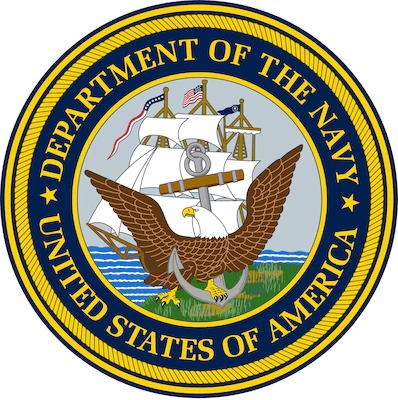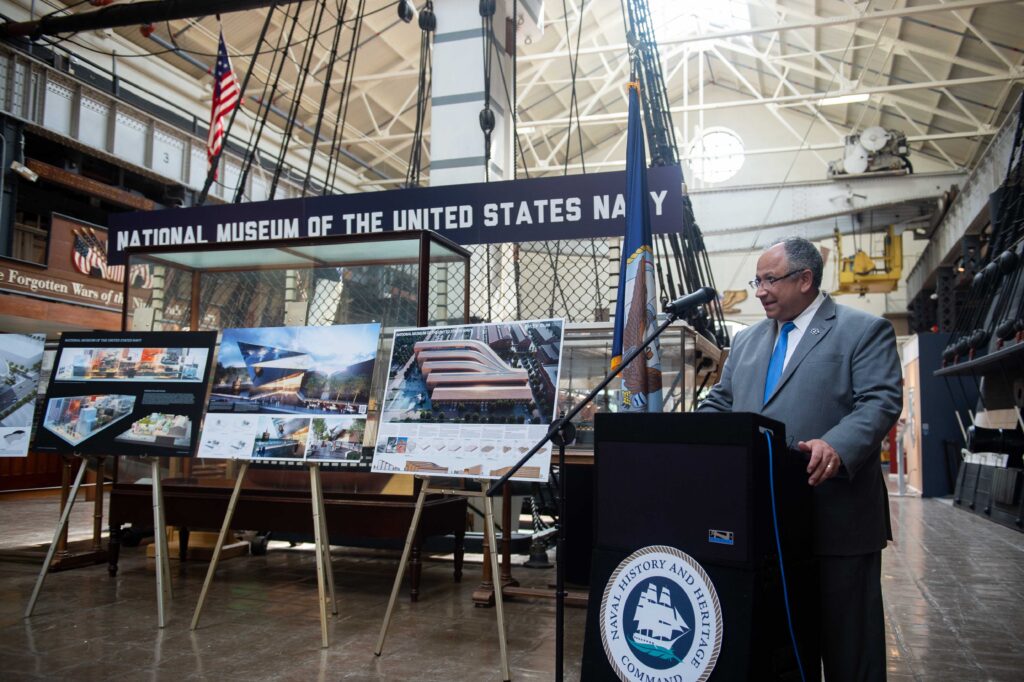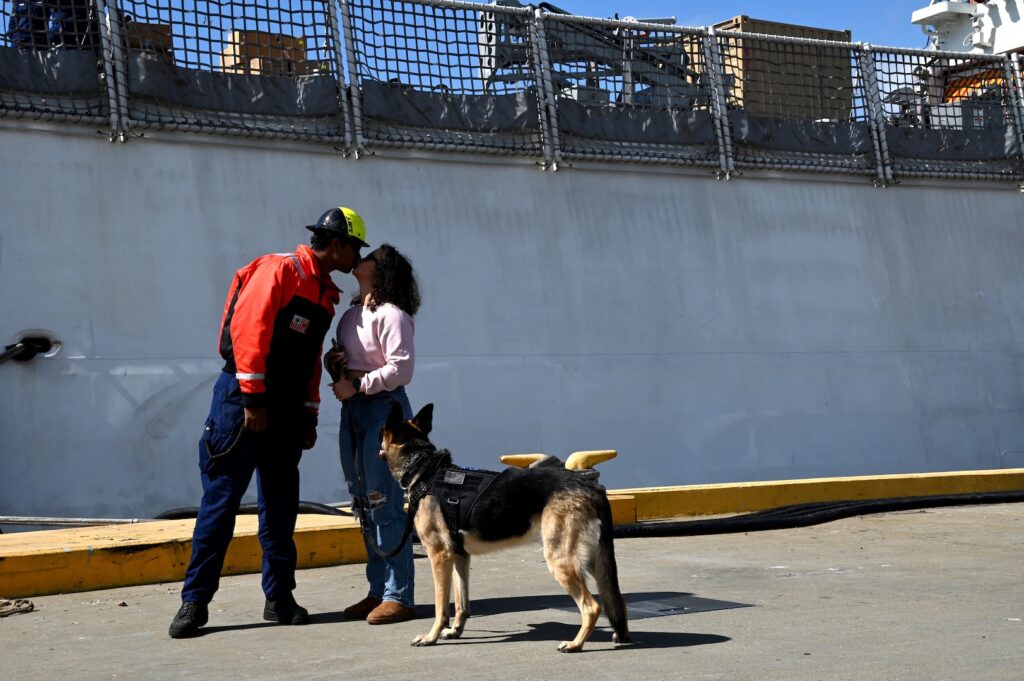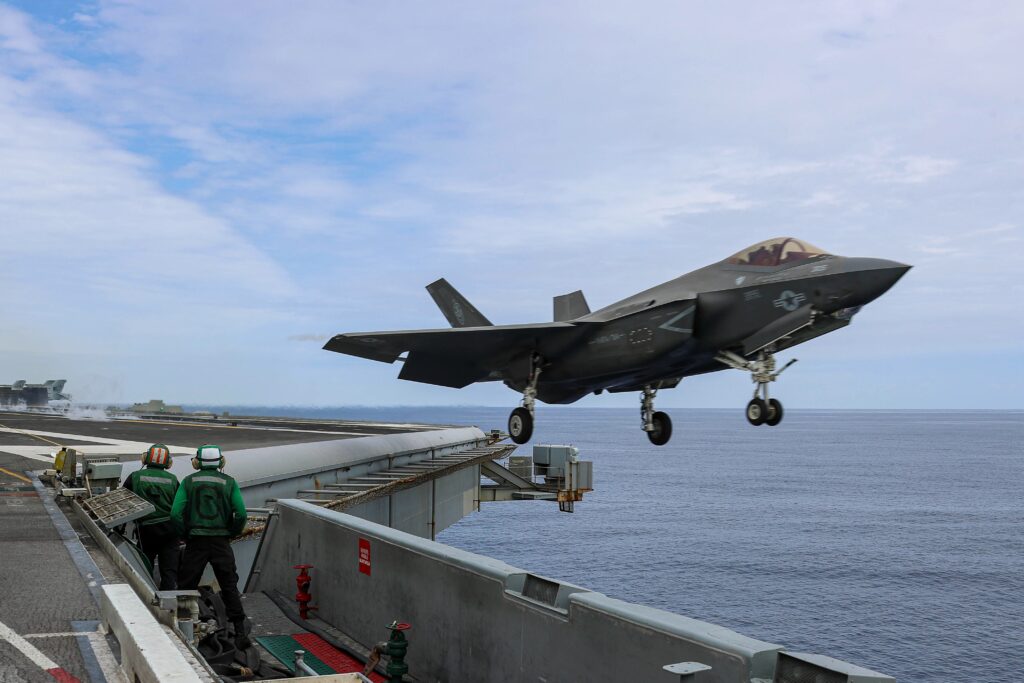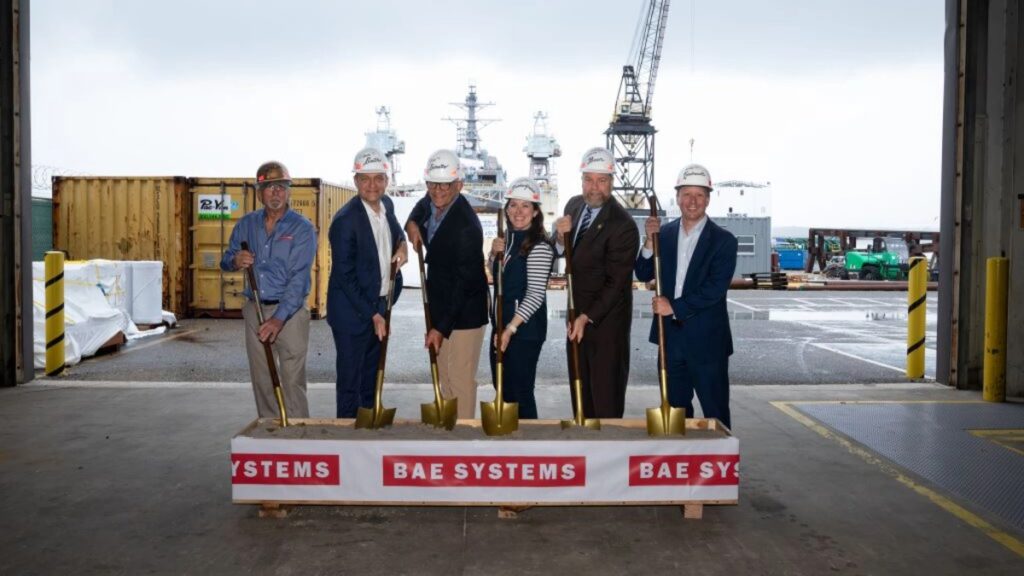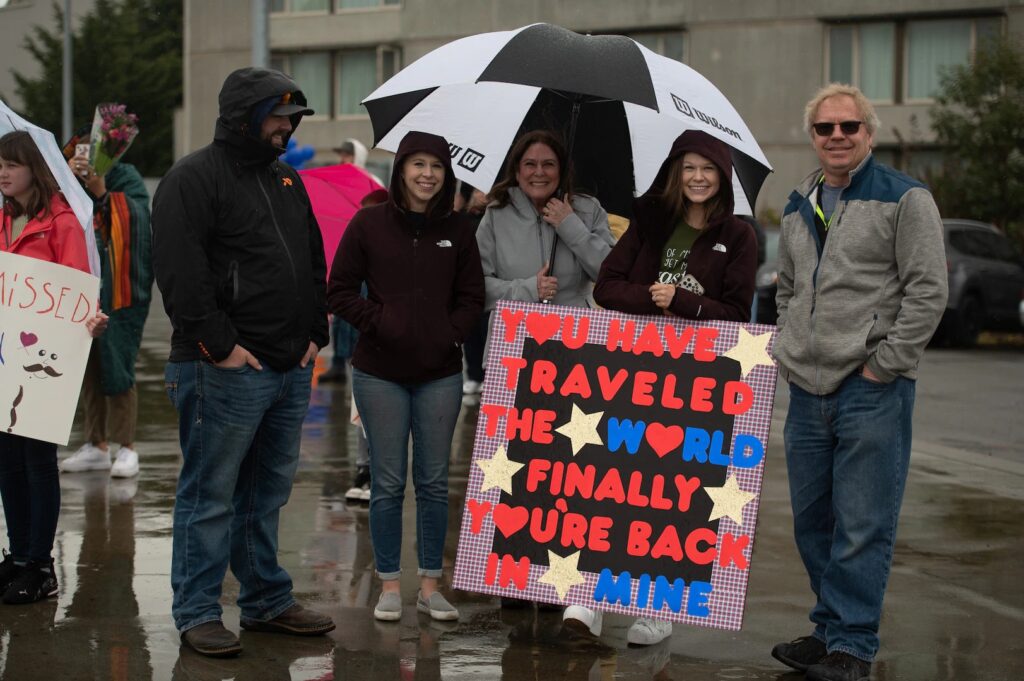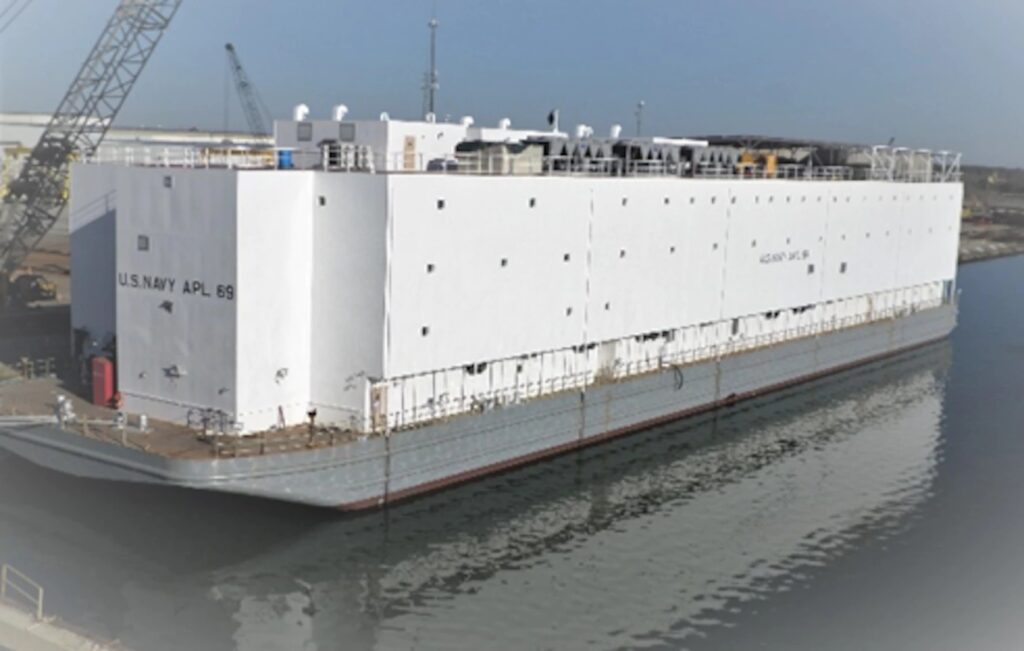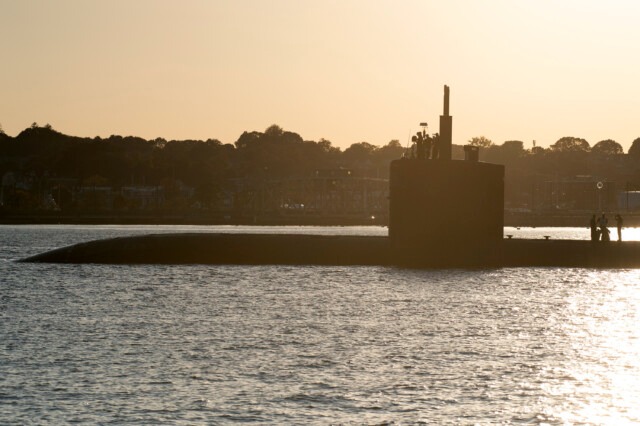USCGC Oliver Henry returns to Guam after strengthening partnerships in Oceania during mission to combat illegal fishing in Pacific
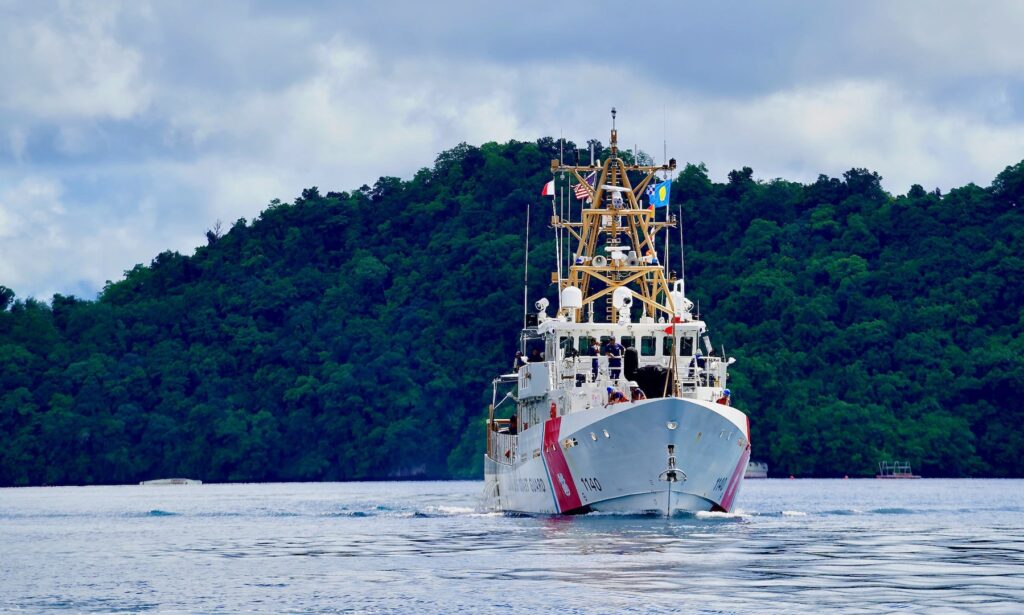
Release from U.S. Coast Guard Forces Micronesia/Sector Guam
*****
USCGC Oliver Henry returns to Guam after strengthening partnerships in Oceania during mission to combat illegal fishing in Pacific
U.S. Coast Guard Forces Micronesia/Sector Guam
SANTA RITA, Guam — The crew of USCGC Oliver Henry (WPC 1140) returned to Guam on April 9, 2023, following a 30-day expeditionary patrol in support of the Pacific Islands Forum Fisheries Agency’s Operation 365 and Operation Rematau to stop illegal, unreported, and unregulated fishing in the Pacific.
Among the significant elements of this expeditionary patrol:
• Patrolled 5,250 nautical miles over 30 days
• Dedicated 23 days on scene within exclusive economic zones of the partner nations of the Republic of Palau and the Federated States of Micronesia, with four days in the high seas pocket between FSM and Papua New Guinea, east of Palau, and one day within the high seas off the west side of Palau
• Completed nine boardings on foreign-flagged fishing vessels under the authority of the Western and Central Pacific Fisheries Commission, with 12 potential violations discovered
• Completed five bilateral boardings on foreign-flagged fishing vessels under the authority of the embarked Palauan shiprider in Palau’s domestic fishing zone; no violations discovered
• Executed four port visits in Yap, FSM, and Koror, Palau, exercising a hub and spoke model of operations with three of four port visits to Koror, allowing for increased time spent on the mission in the region rather than on transits to and from a patrol area
• Completed six shoreside engagements, including hosting 80 students from Palau schools, conducting a damage control subject matter exchange with the crew of the PSS Kedam, and visiting Satawal, FSM
• Completed one underway engagement, conducting a passenger exchange and joint sail with the crew of the FSM-based FSS Tosiwo Nakayama (P901)
“The return on investment for our partners and the nation through the use of the Fast Response Cutters and the U.S. Coast Guard in this region is undeniable, and we hear that demand signal loud and clear,” said Capt. Nick Simmons, commander of U.S. Coast Guard Forces Micronesia/Sector Guam. “We are continuing to adapt how we conduct these longer patrols, far from home, with a platform originally designed for U.S. mainland near-coastal operations of a week to 10 days at sea. Basing out of a partner’s port for multiple legs, rather than island hopping over a longer distance, gives us more time with fewer transit days in these harder-to-reach locations, more time spent building relationships in country, and better support and recovery for our crews.”
A major highlight of the patrol was the engagement on the FSM island of Satawal. Home to about 500 inhabitants, the community hosted its first Pwo – Master Navigator Indoctrination Ceremony since 2007. The Oliver Henry crew, by invitation, held a dialogue and observed local customs with the Piailug family and other elders. A small team of the commanding officer, an engineer, an electronics technician, and a hospital corpsman joined local chiefs to discuss regional topics and challenges in such a remote and austere location.
In 1976, Pius Mau Piailug, a master navigator from Satawal, Yap State, Micronesia, navigated the famous traditional sailing canoe Hōkūle’a on its first voyage without navigation instruments in over 600 years on the ancestral Polynesian sea route from Hawai’i to Tahiti. Subsequently, he taught Hawaiians and other Polynesians the art of navigating guided only by the signs of land, stars, birds, and patterns of waves. He passed away in 2010. The Oliver Henry team spent time with his surviving family. The gathering included master navigators from Hawaii, Saipan, and FSM. Only a handful of master navigators are alive today.
In support of the Pacific Islands Forum Fisheries Agency’s Operation 365 and Operation Rematau, which nests under the U.S. Coast Guard’s Operation Blue Pacific, the crew patrolled through the seas off Palau, conducting bilateral shiprider boardings. They subsequently patrolled the high seas pocket south of the Federated States of Micronesia, discovering a dozen discrepancies and potential violations in the use of vessel monitoring systems, required markings, exemption permits to transship fish, and logging of catch under the requirements set forth by the Western and Central Pacific Fishing Commission.
“It’s a good feeling for the boarding team to know we’re making an impact by documenting these potential violations and educating fishing crews on the requirements,” said Lt. Freddy Hofschneider, commanding officer of Oliver Henry. “On every vessel, the crews met us with respect, positive interest, and a desire to correct deficiencies. Several captains told us this was their first boarding by the U.S. Coast Guard.”
The crews of Oliver Henry and the Tosiwo Nakayama conducted a joint patrol near Yap State in support of Operation 365, part of the FFA’s ongoing regional monitoring control and surveillance operations to counter IUU fishing in the Pacific. OP365 requires the concerted and consistent effort of all 17 Pacific Island Forum Fisheries Agency member nations and the four members of the Pacific Quadrilateral Defence Coordination Group countries, Australia, France, New Zealand, and the United States, to be successful.
“The crew enjoyed conducting a professional exchange, including navigation and seamanship training during a close-quarters formation steaming with our colleagues aboard the FSS Tosiwo Nakayama before they pulled into Yap,” said Hofschneider. “In Palau, we were glad to exchange best practices for damage control with our friends at the Division of Maritime Security ahead of their next underway period.”
In Palau, the Oliver Henry crew hosted over 80 students from Emmaus-Bethania High School and the Palau Community College for tours and demonstrations at the port. This visit followed presentations on the U.S. Coast Guard and IUU fishing by the U.S. Coast Guard Forces Micronesia Compact of Free Association liaison officer and maritime advisor. The following day members of the Oliver Henry engineering department worked through damage control drill administration and planning with personnel from the PSS Kedam. The Forces Micronesia team, joined by operations specialists from the Joint Rescue Sub-Center in Guam, subsequently conducted search and rescue training.
“U.S. Coast Guard Forces Micronesia and our cutter crews are dedicated to serving our partners by providing valuable requested training and resources to meet their needs. The SAR training came at the request of Palau following a recent high-profile search and rescue case,” said Simmons. “Again, we appreciate the efforts of the U.S. embassies and our Australian Pacific Maritime Security Program partners to make these shared multilateral operations possible to increase regional security and prosperity.”
Operation Rematau is how U.S. Coast Guard Forces Micronesia Sector Guam supports the overarching Coast Guard endeavor Operation Blue Pacific to promote security, safety, sovereignty, and economic prosperity in Oceania. Rematau means people of the deep sea, and the effort reaffirms the position shared by the Pacific Island Forum leaders that securing the future requires long-term vision and a carefully considered regional strategy for the Blue Pacific Continent. The operation reinforces the U.S. commitment to working together to advance Pacific regionalism based on the Blue Pacific narrative. It supports U.S. national security objectives while bolstering maritime governance and security.
The Oliver Henry is the 40th 154-foot Sentinel-class Fast Response Cutter named for Oliver T. Henry, Jr., an enlisted African American Coast Guard member first to break the color barrier of a then-segregated Service.
It homeports in Guam, working with U.S. Coast Guard Forces Micronesia/Sector Guam, which comprises nearly 300 personnel to provide a significant portion of the U.S. Coast Guard’s enduring regional presence in Oceania.
For more U.S. Coast Guard Forces Micronesia/Sector Guam news, visit us on DVIDS or subscribe! You can also visit us on Facebook or Instagram at @USCGForcesMicronesia or Twitter @USCGFMSG.
